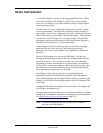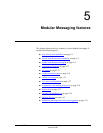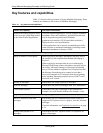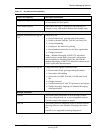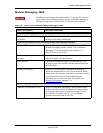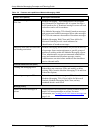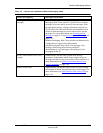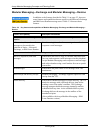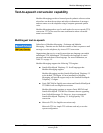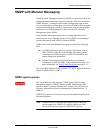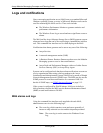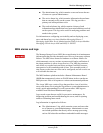
Avaya Modular Messaging Concepts and Planning Guide
5-6 November 2004
Avaya Modular Messaging Concepts and
Planning Guide
Broadcast messages via broadcast
ELA lists
Modular Messaging—MSS administrators can designate
any Enhanced-List Application (ELA) system list to be a
local broadcast list. A broadcast message is sent to all local
subscribers and to all list members.
The Modular Messaging TUIs identify broadcast messages
and present new broadcast messages before other messages.
The TUIs also announce the number of broadcast messages.
Modular Messaging Web Client and Client Add-in for
Microsoft Outlook provide visual indicators for
identification of broadcast messages.
Enterprise-wide class of restrictions
and sending restrictions
Modular Messaging administrators can prevent the delivery
of messages from certain originators to specific groups of
mailboxes residing within the Modular Messaging system.
Thus, administrators can prevent unwanted enhanced-list
usage and unauthorized broadcast message creation.
Administrators can also isolate mailboxes that should not
receive inbound traffic.
Personal distribution lists (PDLs)
Creating and managing PDLs
Subscribers can create new PDLs and modify or delete
existing PDLs from the Modular Messaging TUIs and from
Subscriber Options.
Addressing messages to PDLs Subscribers can address messages to PDLs from the
Modular Messaging TUIs, Client Add-in for Microsoft
Outlook, Modular Messaging Web Client, and any
standards-based e-mail client.
Message privacy
Mark Call Answer messages as
private
Administrators can configure the system to enable callers to
mark Call Answer messages as private. For more
information, see Creating private Call Answer messages
on
page 5-44.
Table 5-2. Features and capabilities of Modular Messaging—MSS
Feature and capability Description and benefits




